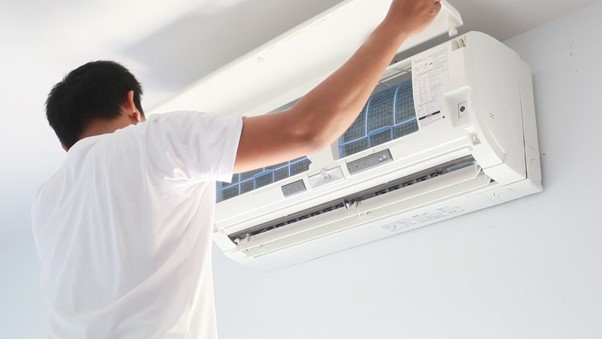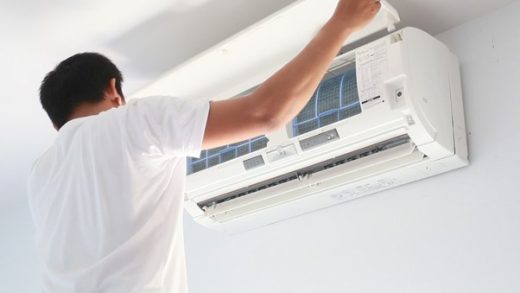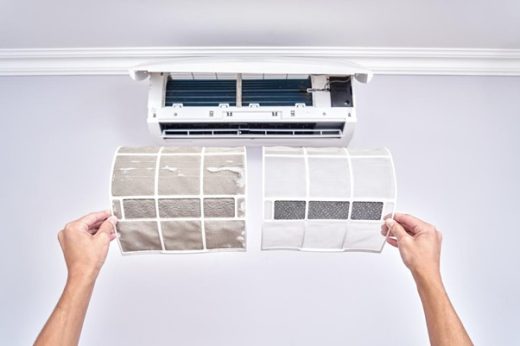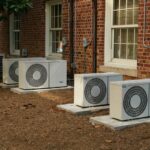8 practical air conditioning maintenance tips, Property AC tips, Online home cooling advice
8 Practical Air Conditioning Maintenance Tips
9 Dec 2021
Looking after your air conditioning is one of the most important things you should do. Fully functional climate control is crucial during intense Australian summers and winters. And if your heating or cooling can’t keep up with the extremes, you could be in strife.
Air conditioning maintenance is relatively simple, thankfully. Of course there are certain things a licensed air conditioning technician must do, but it all starts with you. Ongoing care and maintenance will extend your system’s life span. Meanwhile, a simple clean and inspection could save you money in the long run.
Not too sure where to start? With these 9 practical tips, air conditioning maintenance will be a breeze.
1. Clean Your Air Con Filters Every 3 Months
Maintenance starts inside, and the best way to begin is to clean your air conditioning filters at least every 3 months. Dirty, clogged filters have a direct impact on indoor air quality. You want to breathe in the best possible air, so why sabotage yourself with dusty filters?
Air Conditioners suck up a large amount of dust, debris, fur and little bacteria. But your filters capture it all to keep the air clean and healthy. Yet when the filters clog up, those contaminants remain in the air. You have dusty, allergy-inducing air being funnelled throughout the home.
Avoid the sneezing and itchy eyes by washing your air con filters with slightly soapy cold water. First, gently vacuum out the loose dust particles. You can then rinse and/or soak the filter, before wiping it down gently and allowing it to dry.
Vacuum and wipe down the accessible parts of your indoor air con unit, before placing the dry filter back in place. Now that it’s clean, you have high quality indoor air!
2. Do Not Overwork the Thermostat
Consistent daily usage patterns will help alleviate any stress on your heating and cooling. Forcing your air conditioner to work harder in the heat is one way to wear down parts. As a result it may break down sooner if it’s expected to perform above capacity every day.
Optimum performance temperatures in summer are between 24-26°C/75-79°F. Meanwhile, set your thermostat to between 18-20°C/64-68°F in winter. These settings can vary depending on how hot or cold it is outside.
Running costs will also increase with high thermostat operation. Therefore, turning it down slightly could save as much as 10% on your costs for every degree lower. Also take advantage of programmable thermostat controls for convenience and precision.
3. Keep the Outdoor Unit Clean
Outdoor condenser units attract a surprising amount of rubbish. The wind always blows wrappers and leaves into it, while spiders and small animals love to make it home. Often the outdoor air con unit is also tucked away in a dark corner, meaning you probably have overgrown plants, dust and more.
Not only is it an eyesore, but airflow issues will impact the efficiency of your air conditioner. Likewise, if the unit cannot be vented properly, it could pose a safety hazard.
Thankfully you can easily clean and maintain the outdoor unit. Regularly pick up large pieces of rubbish. Prune plants and trees to maintain a 1-metre clearance around the condenser. You can also use a leaf blower to clear away debris.
Finally, grab the garden hose and wash down the unit with a nozzle setting that’s not too strong. Be sure to also turn off the system before cleaning so there’s no risk of electric shock.
4. Maintain the Condensate Drain
Whether they are heating or cooling, air conditioners create quite a bit of moisture. You often see simple window/box units jutting out over public spaces, dripping all over the place. In a professional install the condensation/condensate is either carried away via a drainage pipe or caught in a tray.
Most air conditioning systems do have a drainage point where water is safely channelled away. Inspect the hose to ensure there are no leaks. If your air con unit drips into an enclosed space, make sure there is a tray to collect the water – and that you change it regularly.
Ample drainage should be available for overflow as you do not want the unit itself to sit in a puddle of water. The condensate should not flow towards the home, either.
Watch for any serious signs of leakage when the air con is in use. If the water seems to be pooling severely, it’s best to contact a professional for prompt repairs. It may also be the best choice to install a drainage tube as it could be a key factor in safety and damage prevention.
5. Clean the Air Vents and Return Vents
Just like air conditioning filters, you want to maintain clean air vents and return vents in ducted systems. Central heating and cooling systems draw in air through wall mounted or ceiling mounted return vents. They also have vents in the ceiling, wall or even floor.
Any high levels of dirt in air vents and filters impacts your indoor air quality. And when the average person spends 90% of their life indoors, that air quality is incredibly important. You want it to be as fresh as possible.
Cleaning is easy, though. Grab a vacuum and suck up loose particles. You may be able to also vacuum some of the ductwork in the ceiling, although you want to be gentle. Do not damage the ducts in any way. Meanwhile, wipe down other surfaces with a damp cloth, or soak vents and filters in slightly soapy water. Make this part of your 3-month filter cleaning routine and you’re good to go.
6. Clean Your Controls
It might be on a small scale, but it’s helpful to clean your air conditioner’s controls regularly. Even wiping down the remote with a slightly damp cloth just helps to prevent dirt building up. If you have touch screen panels, use a microfiber cloth to keep it clean from fingerprints.
7. Inspect the Electronics
If you have any issues with your air conditioning, inspect the electronics. Maintenance is a whole lot easier if you can identify the issue upfront. For example, take a look at the switchboard. If fuses keep tripping and the power goes out regularly, your air conditioner is likely causing your circuits to trip.
An isolator switch will allow you to test performance without other appliances and circuits operating. And if it appears your heating or cooling system is to blame, contact an air conditioning technician or electrician for licensed repairs.
8. Listen, Watch and Learn
Sometimes the best maintenance is doing nothing but observing. Learn how your system should sound, and look out for any visible changes. For example, unexplained rattling, banging, whistling or stuttering could indicate issues with your air con’s fan, motor or ducts.
There could even be small animals trapped within the ductwork causing plenty of literal headaches. Recurring abnormal sounds are a clear sign that you need to book an air conditioning service inspection.
Meanwhile, if you spot any damage like broken connections, water leaks, or cracked casings, you may have a bigger problem on hand. Anything that causes you to raise an eyebrow should be investigated by an air conditioning technician.
Safety first is the best approach when it comes to an important appliance like air conditioning. There’s no harm in booking a service with a trusted technician.
Comments on this 8 practical air conditioning maintenance tips article are welcome.
Bathroom Design
Bathroom Articles
Traits of a competent bathroom professional
Bathroom Flooring Best Options Guide
Design Ideas for a Small Bathroom Renovation
Innovative design trends in bathroom renovations
Building Articles
Residential Property
Comments / photos for the 8 practical air conditioning maintenance tips page welcome






